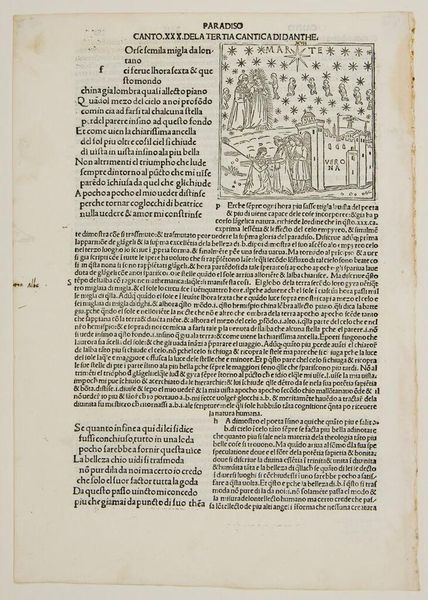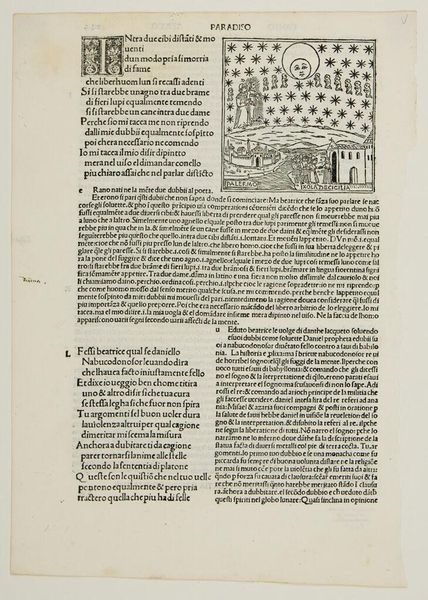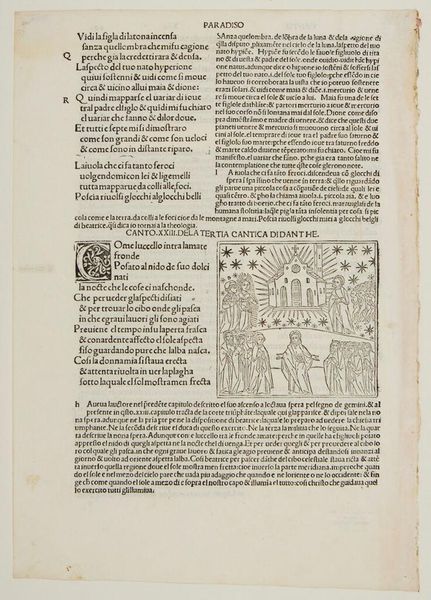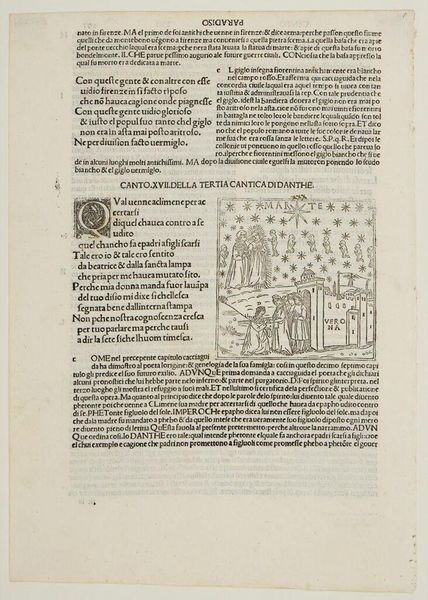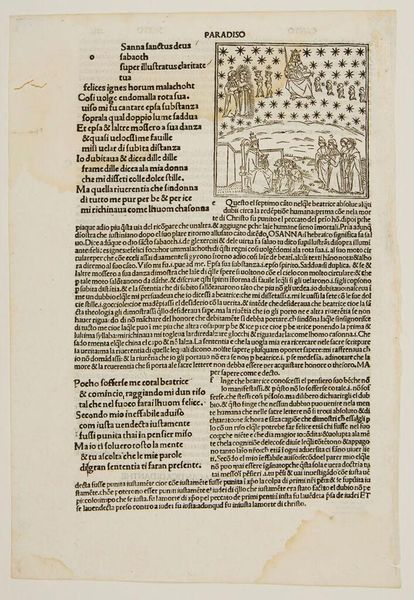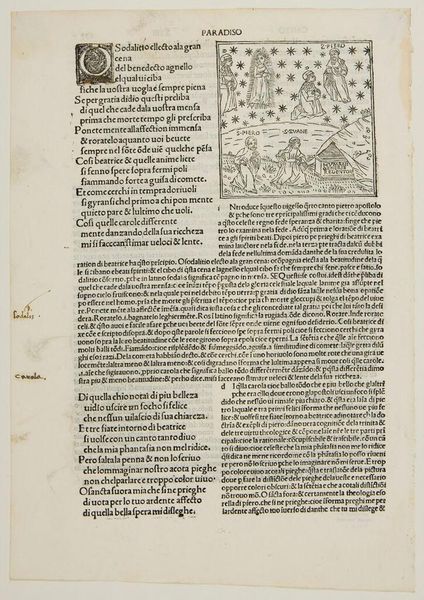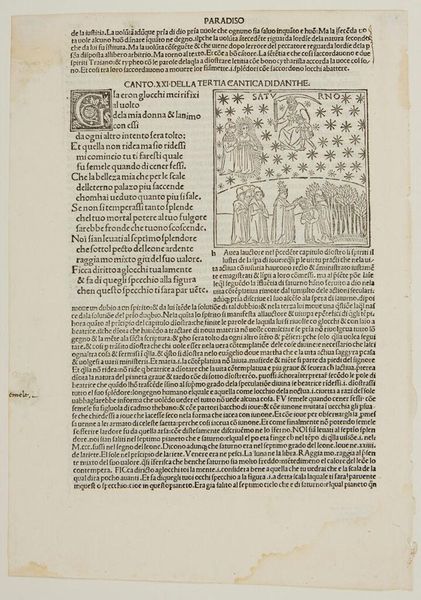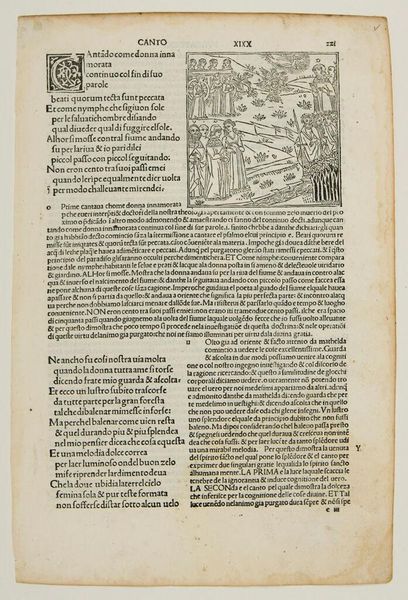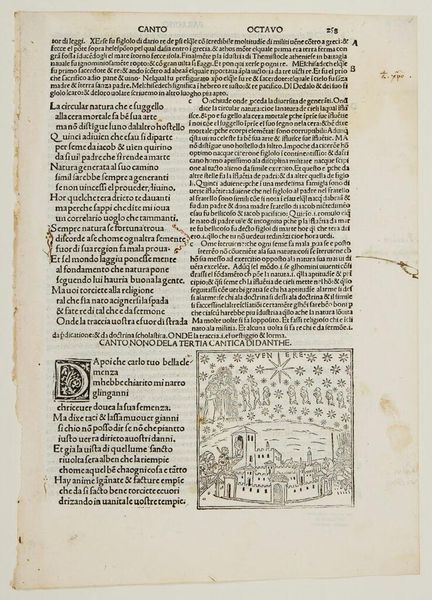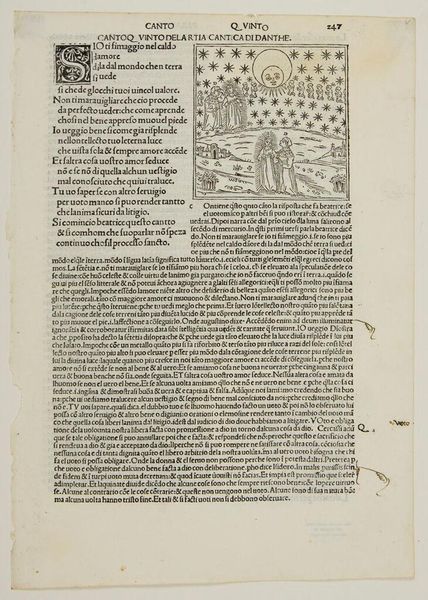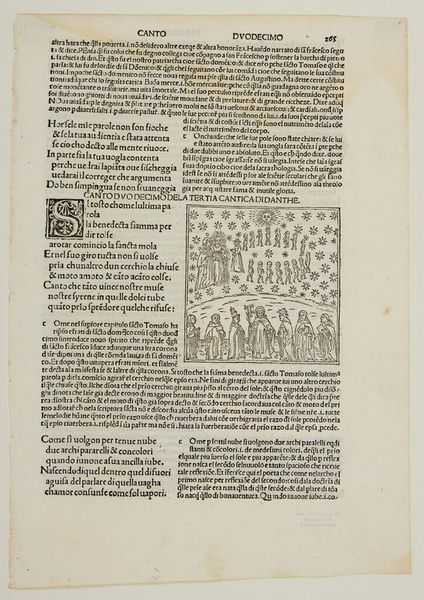
Canto XIX. The Sixth Sphere: Jupiter / The Just and Temperate Rulers; The Celestial Eagle c. 15th century
0:00
0:00
Copyright: CC0 1.0
Curator: This is an illustration of Canto XIX from Dante’s Paradiso. The artist is anonymous, the date is unknown, and it is held at the Harvard Art Museums. What strikes you initially about the image? Editor: It has a celestial, almost dreamlike quality. The figures appear serene and composed, juxtaposed against the starry sky. Curator: This canto depicts the Sixth Sphere, Jupiter, where just and temperate rulers reside. You can see them gathered below the celestial eagle, which is formed by the souls of these rulers. Editor: Knowing that the eagle is formed from souls adds a layer of complexity. It raises questions about collective identity, justice, and the role of leadership. The choice of the eagle as a symbol also feels significant, linking themes of power and divinity. Curator: Absolutely. The eagle, historically associated with Roman emperors and later adopted by various political entities, suggests a divinely ordained and just rule. Editor: It is intriguing to consider how these visual choices contribute to Dante’s broader commentary on ideal governance and morality. It really makes you consider the role of art in shaping cultural values. Curator: Indeed. It's fascinating to see how historical context and artistry combine to create such a rich visual and conceptual experience. Editor: This has given me a lot to think about regarding the intertwined relationship between art, power, and ethics.
Comments
No comments
Be the first to comment and join the conversation on the ultimate creative platform.
